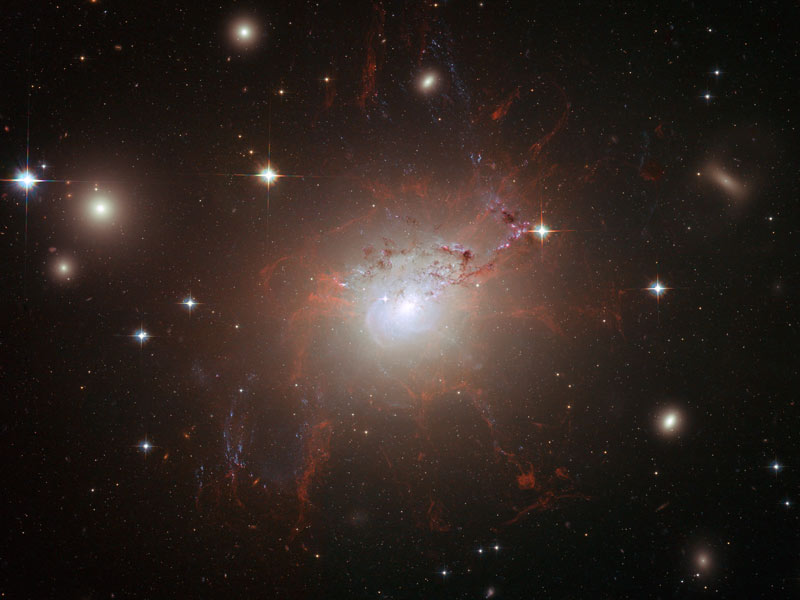Quihan He, January 2023
Strong gravitational lensing offers a compelling test of the cold dark matter paradigm, as
it allows for subhaloes with masses of ~10^9 M⊙ and below to be detected. A recent paper led
by astronomers at the CEA tests commonly used techniques for detecting subhaloes superposed
in images of strongly lensed galaxies....
Matteo Fratta, January 2023
State-of-the-art techniques to identify Hα emission-line sources in narrow-band photometric
surveys consist of searching for Hα excess with reference to nearby objects in the sky
(position-based selection). However, while this approach usually yields very few spurious
detections, it may fail to select intrinsically faint and/or rare Hα-excess sources....
Guillaume Mahler, January 2023
This study explores the gravitational lensing effects of supermassive black holes (SMBHs)
in galaxy clusters. While the presence of central SMBHs in galaxies is firmly established,
recent work from high-resolution simulations predict the existence of an additional
population of wandering SMBHs....
Simone Scaringi, January 2023
A recent paper led by astronomers at the CEA presents a sub-arcsec cross-match of Gaia Data
Release 3 (DR3) against the INT Galactic Plane Surveys (IGAPS) and the United Kingdom Infrared
Deep Sky Survey (UKIDSS).....
Brivael Laloux, January 2023
A complete census of Active Galactic Nuclei (AGN) is a prerequisite for understanding the growth of
supermassive black holes across cosmic time. A significant challenge toward this goal is the
whereabouts of heavily obscured AGN that remain uncertain.....
James Nightingale, January 2023
Nearly a century ago, Edwin Hubble famously classified galaxies into three distinct groups:
ellipticals, spirals and irregulars (Hubble, 1926). Today, by analysing millions of galaxies
with advanced image processing techniques Astronomers have expanded on this picture and revealed
the rich diversity of galaxy morphology....


































































